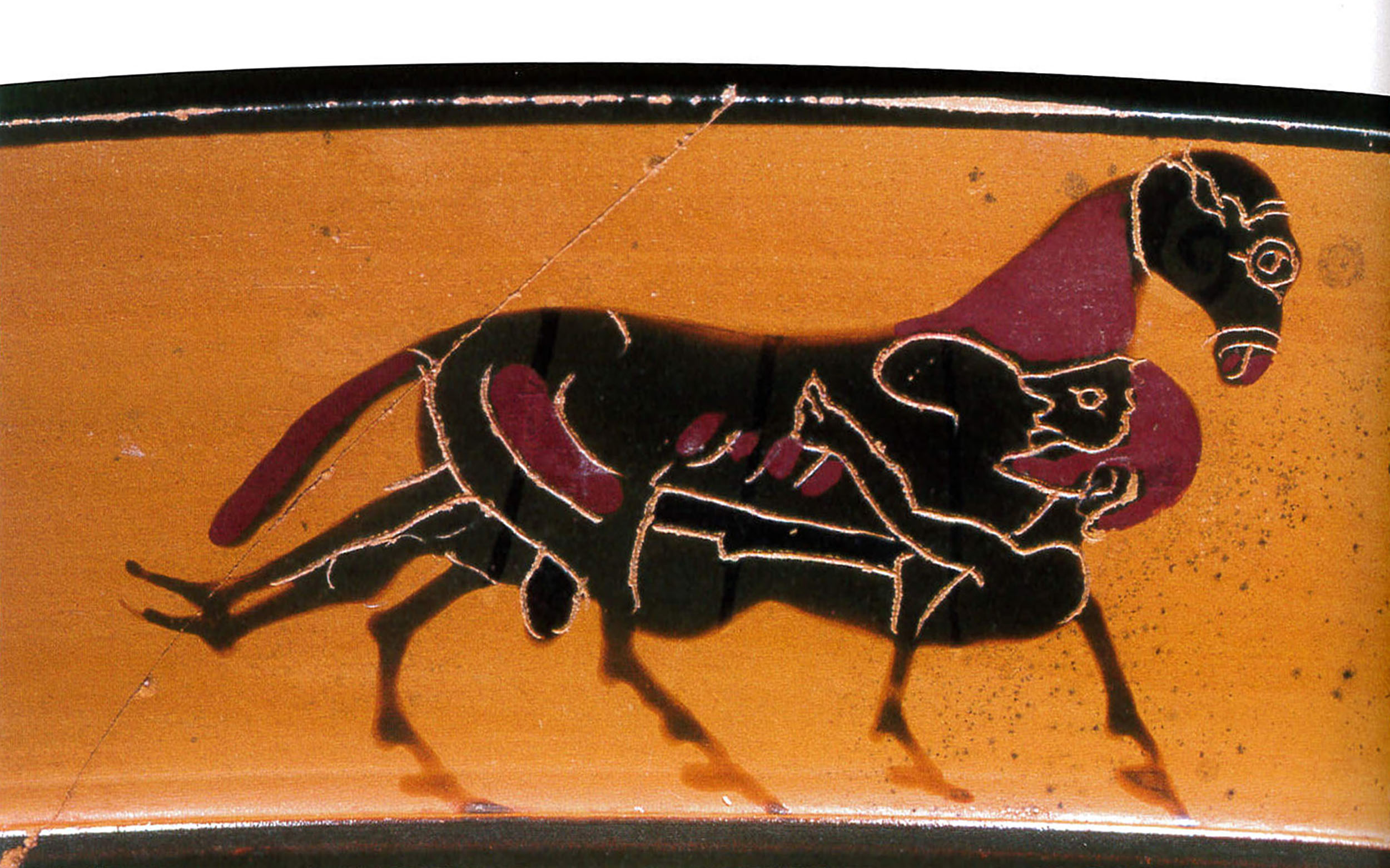



The vase-painters of the Archaic period loved to depict myths known from epic poetry and other oral traditions. The black-figure technique allowed them to render the various scenes in detail. In this kylix, the painter shows the escape of Odysseus from the cave of Cyclops Polyphemus, as narrated by Homer (Odyssey, 9, 432-434). While his comrades had left the cave hidden under three rams each, Odysseus escaped hung under the belly of a single ram.
We can see the incised outlines of the two figures and the colour differences, which are used by the vase-painter to emphasize specific features and details. Under the painting there is a alphabetic inscription, with repetitive syllables which make no sense (ΠYKALYANKALYAKYϞ). Non-sense inscriptions were common in cups of that type (known as Athenian Little Master cups). It is not clear if they had a specific purpose or were simply used as decorative motifs by illiterate vase-painters.
The kylix was the vessel-type most commonly used for drinking wine in ancient Greece. It is highly probable that such vessels were used in symposia (banquets), where bard recited Homeric epics.
PUBLICATION
– Saraga Ν. 2006. Collection no. 53, in Choremi-Spetsieri Α. – Zarkadas Α. (eds), The Paul and Alexandra Canellopoulos Museum. Ancient Art, Athens, 84-85.
– Zarkadas Α. 2010. «Ομηρικά θέματα στο Μουσείο Κανελλοπούλου», in Μύθοι, κείμενα, εικόνες: ομηρικά έπη και αρχαία ελληνική τέχνη. Πρακτικά ΙΑ Διεθνούς Συνεδρίου για την Οδύσσεια, Athens, 95-120, esp. 98-102.